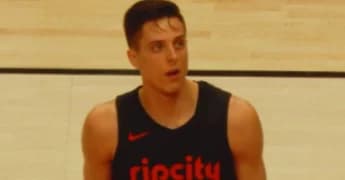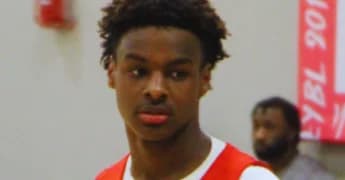Is Paul Reed’s newfound prowess from beyond the arc the real deal or just a flash in the pan? Despite its unconventional aesthetics, Reed’s recent proficiency in perimeter shooting, often referred to as Reed’s Three-Point prowess, begs the question: can he sustain this momentum?
The Truth Behind Paul Reed’s Three-Point Surge
Paul Reed’s journey through his fourth NBA season hasn’t been smooth sailing. With Joel Embiid sidelined for an extended period, the spotlight has intensified on Reed, highlighting both his highs and lows. However, amidst the tumult, one aspect of his game has notably blossomed: his shooting.
Since the 2024 All-Star break, Reed’s three-point shooting has skyrocketed, boasting an impressive 63.6 percent conversion rate on 1.1 attempts per game. This surge has elevated his season-long three-point average to 40.9 percent, a significant improvement for the Philadelphia 76ers’ forward.
While skeptics may downplay the significance of his low shooting volume, it’s precisely this progression that the Sixers have been yearning for. Earlier in the season, head coach Nick Nurse granted Reed the green light to unleash his perimeter shots, a directive Reed initially struggled to embrace. However, his recent success indicates a newfound confidence and accuracy from downtown.
This late-season resurgence might be dismissed by some as a fluke, but it could hold deeper implications for the team’s future, especially upon Embiid’s return. Nurse’s initial plan to integrate Reed alongside Embiid was hampered by injuries and Reed’s early shooting struggles. However, if Reed can consistently deliver from long range, we might witness a more harmonious partnership between the two players.
For Sixers fans, the prospect of Reed’s shooting prowess becoming a permanent fixture is tantalizing yet uncertain. However, a closer look at Reed’s history unveils a promising trajectory. During his tenure with the Delaware Blue Coats in the G League, Reed showcased an elite three-point stroke, converting at a remarkable 43.6 percent rate over 24 games.
Furthermore, Reed’s collegiate career at DePaul hinted at his shooting potential, particularly in his sophomore year when he eclipsed the 40 percent mark from beyond the arc. While his shooting regressed in his junior year, his decision to enter the NBA draft speaks volumes about his confidence in his abilities.
Though skeptics may doubt the sustainability of Reed’s current shooting prowess, his track record suggests otherwise. While it’s unlikely that he’ll maintain a 40 percent conversion rate on higher shot attempts, his ability to stretch defenses could earn him more playing time in a fully healthy roster scenario.
In the ever-unpredictable landscape of professional basketball, only time will reveal the true extent of Reed’s shooting capabilities at the NBA level. However, if history serves as any indication, we may very well witness a more prominent role for Paul Reed alongside Joel Embiid in the near future.
Is Paul Reed’s newfound prowess from beyond the arc the real deal or just a flash in the pan? Despite its unconventional aesthetics, Reed’s recent proficiency in perimeter shooting, often referred to as Reed’s Three-Point prowess, begs the question: can he sustain this momentum?
The Truth Behind Paul Reed’s Three-Point Surge
Paul Reed’s journey through his fourth NBA season hasn’t been smooth sailing. With Joel Embiid sidelined for an extended period, the spotlight has intensified on Reed, highlighting both his highs and lows. However, amidst the tumult, one aspect of his game has notably blossomed: his shooting.
Since the 2024 All-Star break, Reed’s three-point shooting has skyrocketed, boasting an impressive 63.6 percent conversion rate on 1.1 attempts per game. This surge has elevated his season-long three-point average to 40.9 percent, a significant improvement for the Philadelphia 76ers’ forward.
While skeptics may downplay the significance of his low shooting volume, it’s precisely this progression that the Sixers have been yearning for. Earlier in the season, head coach Nick Nurse granted Reed the green light to unleash his perimeter shots, a directive Reed initially struggled to embrace. However, his recent success indicates a newfound confidence and accuracy from downtown.
This late-season resurgence might be dismissed by some as a fluke, but it could hold deeper implications for the team’s future, especially upon Embiid’s return. Nurse’s initial plan to integrate Reed alongside Embiid was hampered by injuries and Reed’s early shooting struggles. However, if Reed can consistently deliver from long range, we might witness a more harmonious partnership between the two players.
For Sixers fans, the prospect of Reed’s shooting prowess becoming a permanent fixture is tantalizing yet uncertain. However, a closer look at Reed’s history unveils a promising trajectory. During his tenure with the Delaware Blue Coats in the G League, Reed showcased an elite three-point stroke, converting at a remarkable 43.6 percent rate over 24 games.
Furthermore, Reed’s collegiate career at DePaul hinted at his shooting potential, particularly in his sophomore year when he eclipsed the 40 percent mark from beyond the arc. While his shooting regressed in his junior year, his decision to enter the NBA draft speaks volumes about his confidence in his abilities.
Though skeptics may doubt the sustainability of Reed’s current shooting prowess, his track record suggests otherwise. While it’s unlikely that he’ll maintain a 40 percent conversion rate on higher shot attempts, his ability to stretch defenses could earn him more playing time in a fully healthy roster scenario.
In the ever-unpredictable landscape of professional basketball, only time will reveal the true extent of Reed’s shooting capabilities at the NBA level. However, if history serves as any indication, we may very well witness a more prominent role for Paul Reed alongside Joel Embiid in the near future.







